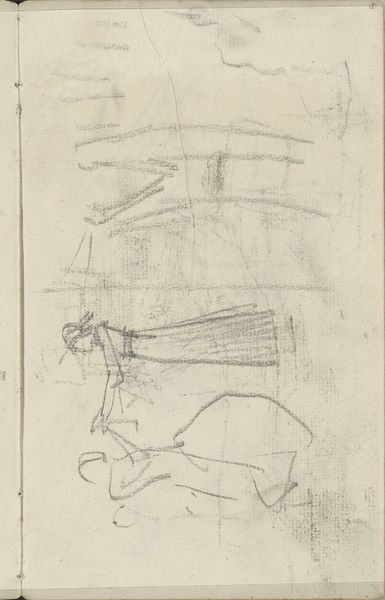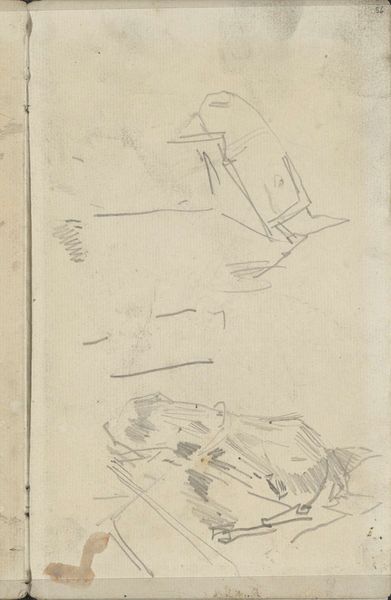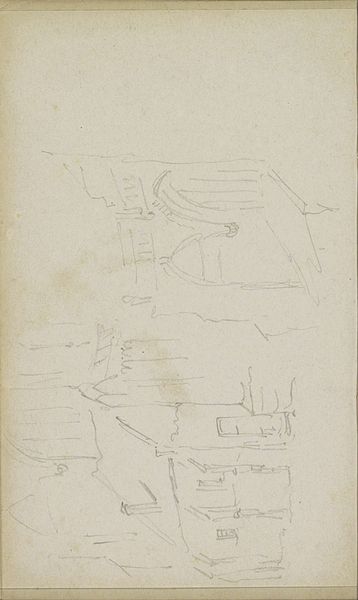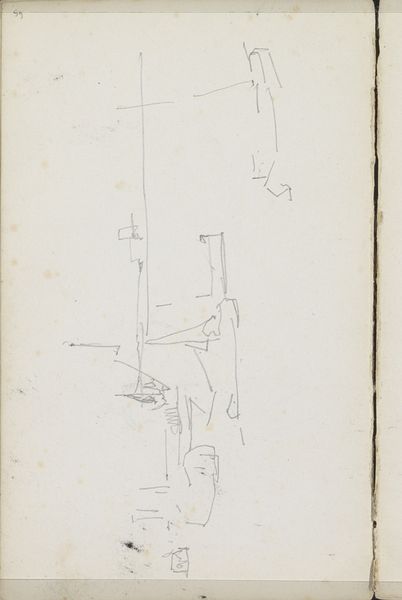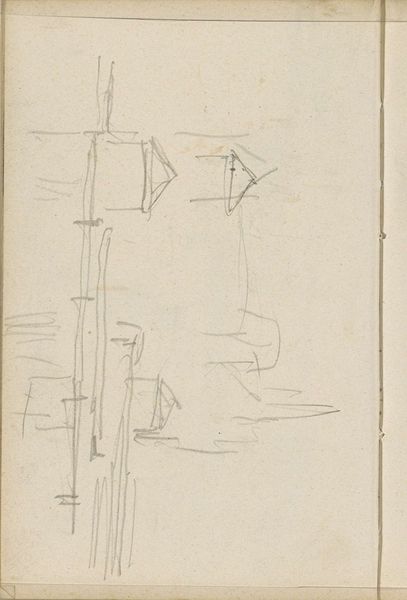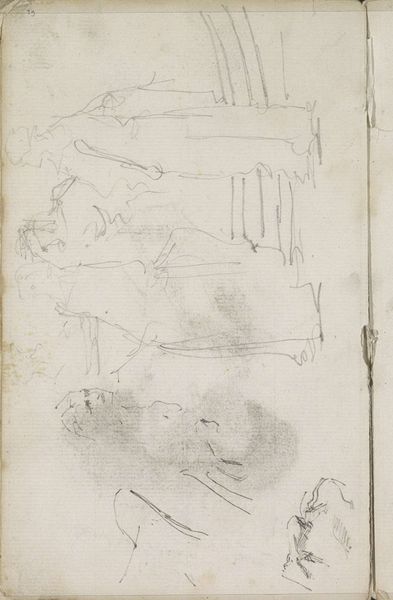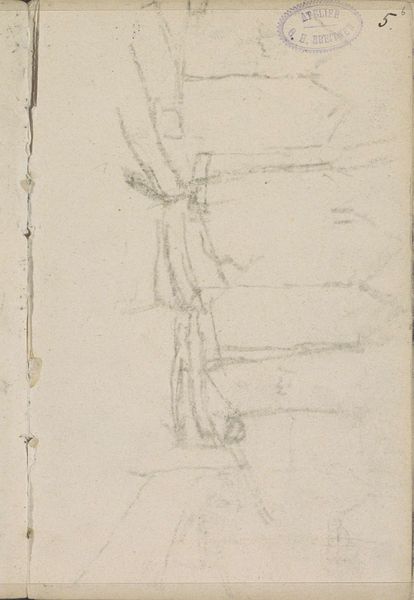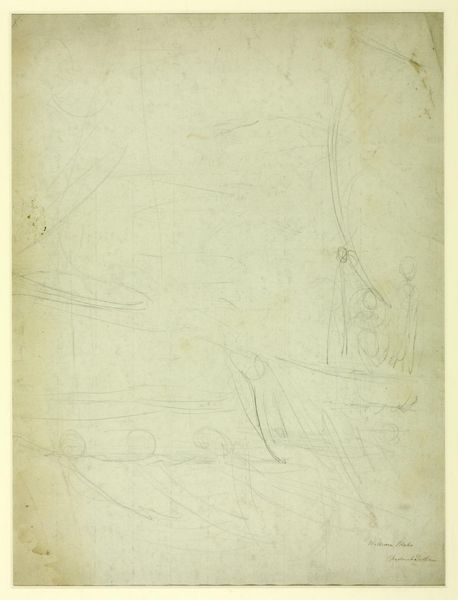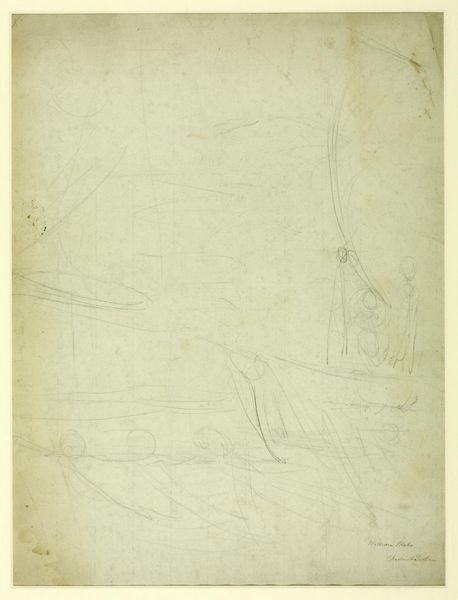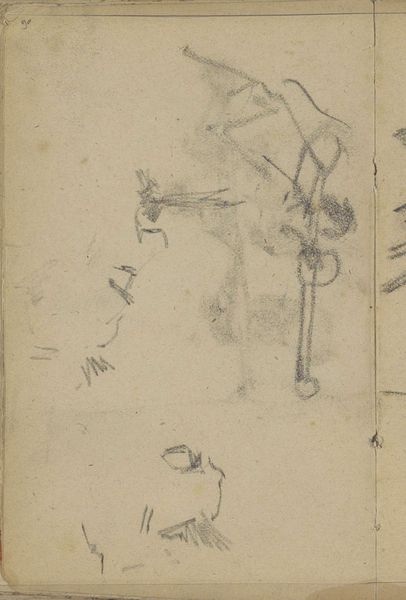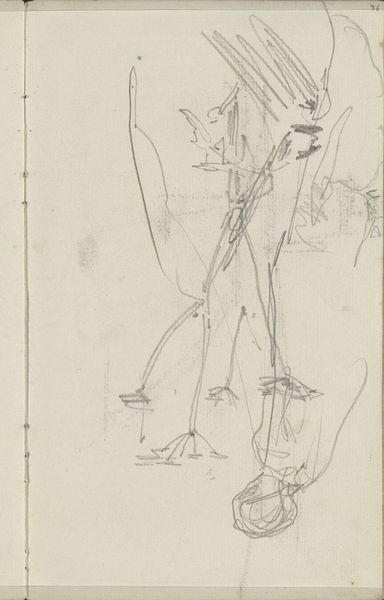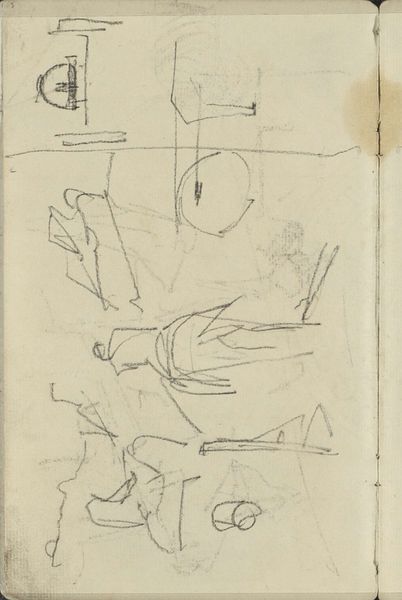
Romp van een schip met een zwaard, een boei en onderdelen van een anker 1802 - 1882
0:00
0:00
drawing, paper, pencil
#
drawing
#
aged paper
#
toned paper
#
light pencil work
#
pencil sketch
#
sketch book
#
paper
#
form
#
personal sketchbook
#
romanticism
#
pencil
#
line
#
sketchbook drawing
#
pencil work
#
storyboard and sketchbook work
#
sketchbook art
#
realism
Dimensions: height 115 mm, width 92 mm
Copyright: Rijks Museum: Open Domain
Curator: Right, let's immerse ourselves in this fascinating page from John Linnell’s sketchbook, dating roughly from 1802 to 1882. We're looking at a collection of pencil drawings depicting a ship's hull, a sword, a buoy, and what seems to be anchor parts, all rendered on aged paper. Editor: My first thought? There’s something really poignant about seeing these humble tools of navigation and defense captured so simply. It's like finding a quiet corner in a storm. Curator: Absolutely. These aren’t grand, finished artworks, but rather intimate glimpses into the artist's thought process. Linnell, known for his landscapes and religious scenes, uses realism with a delicate touch, typical of romanticism, to give a sense of form in something like a personal inventory of objects he had near him. What could be more important than knowing how to float! Editor: Exactly! It highlights the vital role these elements play – a sort of silent poetry of functionality. Looking closely at the buoy... it's amazing how much Linnell conveys with so few lines. You almost feel the water lapping around it. Curator: And notice the placement – not precisely centered, leaving much of the paper around. That invites reflection, doesn't it? A little space makes all the difference and makes the sketch book's light pencil work become so important, adding breath into the work! Editor: It does! Thinking about sketchbooks as documents, what does it say about 19th-century artistic practices? Was it common for artists to record nautical items, what kind of cultural value can you extract by doing that? Curator: The accessibility to draw the equipment and then using that for bigger artworks seems pretty normal, also documenting for possible artworks or painting in future days and projects. Editor: Agreed, what seems to be so great about those humble drawings, is the honesty within them. No pretenses, but a dedication to craft and storytelling on simple sheets of paper. They remind us that every grand voyage starts with just an idea. Curator: Indeed. They offer quiet insight into how all the greatest artists learned about life around them, by putting that same life down onto paper, they gave the chance to the rest of us to observe along with them. What a thought.
Comments
No comments
Be the first to comment and join the conversation on the ultimate creative platform.
